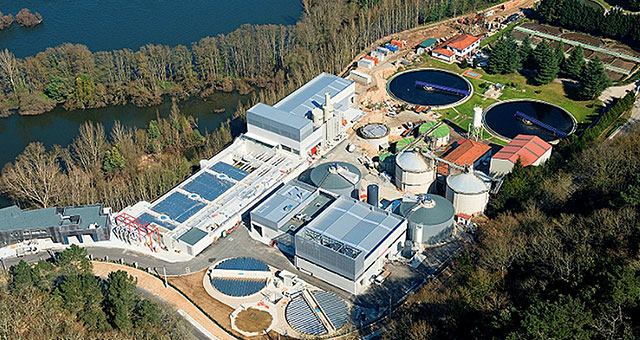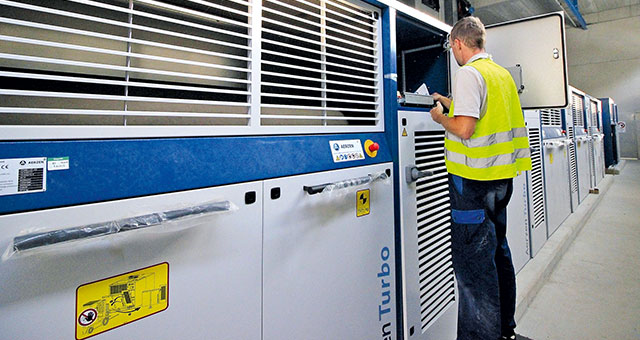A wastewater treatment plant in the Spanish city of Ourense has been modernised by means of AERZEN technology. Eleven AERZEN assemblies are now being used there for waste water treatment.
- Article Eleven assemblies for Spanish wastewater treatment plant
Modernisation with AERZEN technology

About 350,000 people live in the catchment area of the city of Ourense in the northwestern province of Galicia. Comprehensive modernisation measures have been taken to clean the waste water in this region in accordance with current regulations. These include the construction of collection tanks, a new wastewater treatment plant, dismantling of the existing wastewater treatment plant and the environmental remediation of the affected area.
With a maximum flow rate of 4,238 m3/h of waste water to be treated, the new plant in Ourense is three times larger than the previous wastewater treatment plant. AERZEN technology plays an important role here. The assemblies installed therein by Aerzen Ibérica are:
- Four Delta Blower GM 7L
- Two Hybrid D 98S
- Five Turbo AT 300
Bernardo Alonso and Jesús Carrasco from the technical team of Aerzen Ibérica, and Alexander Mau from Aerzen, participated in the commissioning of the machines. The combination of technologies is possible thanks to the three different technologies developed by AERZEN (see infobox) for oil-free air solutions: Delta Blower (conventional blowers), Delta Hybrid (hybrid machines) and Aerzen Turbo (turbo blower).
Optimisation of processes
The wastewater treatment plant in Ourense comprises the compact SEDIPAC 3D lamellar transfer plant and the CYCLOR biological wastewater treatment plant for the water line and an advanced digestion process for the sewage sludge line, consisting of thermal pretreatment by thermal hydrolysis and subsequent mesophilic anaerobic digestion, as well as a special assembly for the treatment of waste water (CLEARGREEN).
The design, and the incorporation of new technologies for waste water treatment, made it possible to optimise the processes at the wastewater treatment plant in Ourense, with the following results:
- Reduction of energy consumption
- Increase in energy production
- Reduction of biological solids
- Upgrading of sewage sludge for agricultural use
- Reduction in the consumption of reactants
- Reduction of odour emissions and the volume of air to be deodorised
